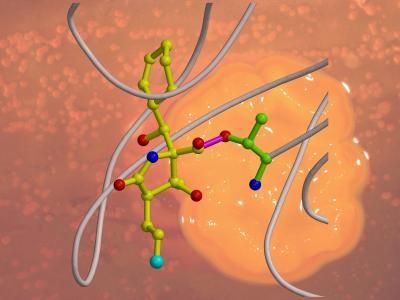Quick Test for Polluted Environments
The "Biotool" project seeks to use bacterial marker molecules for predictions
Advertisement
bacteria usually rapidly adapt to environmental pollution. They generate specific proteins - biomolecules - that break down pollutants and help them to survive under otherwise adverse conditions. A more precise study of these molecules has now been launched to provide fast and reliable information on the self-cleaning activities of bacteria in polluted environments. Developing the methods for such a study is the task of "Biotool", an international research effort conducted by nine laboratories in Germany, Spain, Denmark, Switzerland and the Czech Republic. The European Union is supporting the project with a grant of EUR1.8 million. Coordinator of the project is the German Research Centre for biotechnology in Braunschweig (GBF).
Biomolecules are revealing
The number of sites in which soil or water have been contaminated by pollutants is estimated at several hundred thousand in Europe alone. "We are studying how the metabolisms of surface soil and water bacteria respond to such pollutants," explains Dr. Dietmar Pieper, a GBF scientist and the coordinator of Biotool. "By examining characteristic proteins and genes we hope to find out whether a self-cleaning, regenerative potential exists at contaminated locations and how active and effective the bacteria are in breaking down the pollutants," says Dr. Pieper. "We also want to learn whether a certain spectrum of bacterial proteins is indicative for the adaptive capabilities of the microorganism community as a whole." Pieper points out that bacteria form molecules that trigger fast and frequent changes in their genetic make-up when the environment is severely contaminated. This, he says, allows for a rapid adaptation to changing environmental conditions. "When we understand exactly how this functions," notes Pieper, "then we will be able not only to assess degradative potential and activity, but also can predict evolution of microbial communities and thus will know early on whether a particular bacterial population will manage to break down a specific pollutant or how long a certain toxic situation is going to last."
In the initial phases of the project, work groups are studying the reactions of bacteria to chlorinated solvents and aromatic hydrocarbons. "These classes of substances are the most common cause of ground water pollution in Europe", says Dr. Pieper.
Searching for the "stress gene"
In addition to the proteins, project researchers are also studying the genes which store the blueprints for building these proteins. "We want to develop DNA chips that show us which genes the bacteria turn on in the presence of chlorinated hydrocarbons," explains Pieper.
The project participants hope that in a few years the quick diagnosis tests under development will lead to a better understanding of the activities and adaptation abilities of bacterial communities. Dr. Pieper is confident that such an instrument, with a few minor changes, also could be used to study bacterial communities where pathogens occur. Citing infection ecology as one example, Pieper notes that here "we could study where pathogen reservoirs are hiding and what environmental influences help them spread."



























































